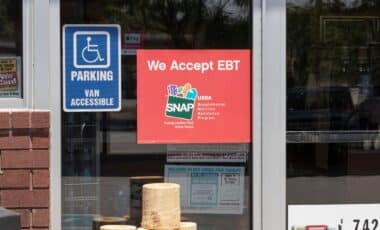President Donald Trump’s proposed tax cuts, which could amount to trillions of dollars, include significant changes to the country’s social safety net programs.
Among the most notable alterations is the Supplemental Nutrition Assistance Program (SNAP), previously known as food stamps.
The proposed adjustments could lead to reductions in government spending on food assistance, thereby affecting millions of lower-income individuals across the United States.
According to AP News, these changes involve a variety of reforms, including shifting costs to states and altering eligibility criteria.
The outcome of these changes may have lasting implications for both beneficiaries and the broader economy.
The Evolution of SNAP
The federal food assistance program, renamed SNAP on October 1, 2008, provides financial support for food purchases to low-income residents.
This includes individuals earning less than $1,632 per month and households of four making under $3,380 monthly.
The modern version of the program, which dates back to 1979, eliminated the requirement for participants to purchase food stamps.
Today, participants incur no costs to receive assistance. However, the nation’s first experiment with food stamps began in 1939, marking a pivotal moment in the evolution of this program.
Participation in SNAP
As of February, over 42 million Americans, or about one in eight people, received SNAP benefits, down from a peak of 47.6 million people in 2013.
Around 22.5 million households benefit from SNAP, receiving an average monthly benefit of $353.
The funds can be used to purchase most groceries, although recent policy changes in some states have excluded items like soda and candy.
These changes have been approved by the Trump administration in states such as Arkansas, Idaho, Indiana, Iowa, Nebraska, and Utah.
Projected Financial Impact
The House version of the tax cut bill is expected to trim $295 billion from SNAP spending over the next decade. The Congressional Budget Office (CBO) estimates that much of these savings will come from transferring costs to the states, which administer SNAP.
Additionally, the expansion of work requirements and the reduction of benefits for certain immigrant groups could also contribute to the savings.
Specifically, the legislation is projected to eliminate SNAP benefits for between 120,000 and 250,000 immigrants who are legally in the U.S. but are not citizens or lawful permanent residents.
Expanding Work Requirements
Currently, SNAP participants aged 18 through 54 without dependents must work, volunteer, or participate in training programs for at least 80 hours per month to maintain benefits.
The new legislation would extend these requirements to adults aged 55 through 64 and some parents of children aged 7 and older.
The CBO projects that these changes would result in a reduction of 3.2 million participants from the program each month.
Shift of Costs to States
The bill would also shift a larger share of SNAP’s administrative costs to the states.
By 2028, states would be required to cover at least 5% of food assistance costs, with that amount increasing for states with higher payment error rates.
Specifically, the national error rate stood at 11.7% for the fiscal year 2023, and only three states—Idaho, South Dakota, and Vermont—had error rates below 5%.
This could significantly impact states with higher error rates, potentially leading to reductions or eliminations of benefits.









